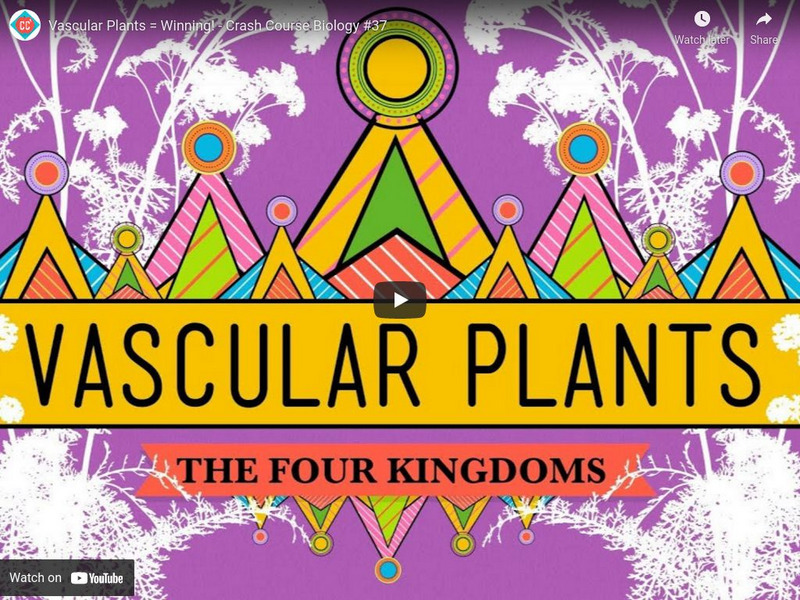Be Smart
The Surprising Origin of Thanksgiving Foods
Many of the foods pilgrims ate include foods people still eat at American Thanksgiving celebrations today. The turkey, a domesticated animal native to the Americas, often finds itself the center of attention on this holiday. Today's corn...
FuseSchool
Transport in Plants, Part 3: Phloem and Translocation
Leaves produce sugars through photosynthesis, but how do the sugars get to the rest of the plant? The final video in a three-part series within the Fuse School Biology playlist answers this question. It details how the phloem and...
Crash Course
Vascular Plants = Winning!
Viewers explore vascular plants with a video that shows their different tissues, their ability to grow taller and wider, and their parts. Young scientists then see these plants xylem and phloem and learn how vascular plants move water...
Crash Course
The Plants and the Bees: Plant Reproduction
This video explains the difference between gametophytes and sporophytes and uses this this information to teach the reproduction process of various vascular plants. Viewers see how ferns, gymnosperms, and angiosperms reproduce.
Be Smart
We've Got Ants in Our Plants!
Some ants are so aggressive, they can repel an elephant. Viewers learn this fact and more in an engaging video that is part of a larger playlist on biology. It discusses the relationships between ants and plants. While plants provide...
MinuteEarth
Why Are Leaves Green? Part 2
Examine the role of chlorophyll in the process of photosynthesis. An interesting video lesson helps learners understand the efficiency of green chlorophyll as it creates energy for a plant. Although 99.9 percent of plants use green...
Crash Course
The Columbian Exchange: Crash Course History of Science #16
Back in 1492, when Columbus sailed the ocean blue, he discovered more than a new world! Part 16 in an ongoing History of Science series explores the Columbian Exchange and other major events in the Spanish colonial period. Viewers learn...
TED-Ed
The Simple Story of Photosynthesis and Food
Meet adorable, animated chloroplasts as they produce glucose with the help of the sun. Viewers learn how carbon, oxygen, hydrogen, and electrons are combined to form carbohydrates with an engaging video. The narrator also explains how...
Crash Course Kids
Who Needs Dirt?
How do plants get the nutrients they need? This is the focus of a video that discusses how plants use photosynthesis to survive, with or without dirt.
Deep Look
Banana Slugs: Secret of the Slime
Banana slugs eat animal droppings and leaves, all while generating waste that acts as a fertilizer. The video explains the slug's role in the ecosystem. It highlights the benefits of the slime for slugs' movement, food source, and even...
Other
British Nutrition Foundation: Food a Fact of Life: Food and Farming: Plants
Watch this short video clip on plants and how they are grown as food for humans. [1:09]
Crash Course
Crash Course Biology #37: Vascular Plants = Winning!
Hank introduces us to one of the most diverse and important families in the tree of life - the vascular plants. These plants have found tremendous success and the their secret is also their defining trait: conductive tissues that can...
Science Friday Initiative
Science Friday: Finding the Roots of an Ancient Crop
Agave plants, probably best known as the source of tequila, were important as a food crop long before the invention of margaritas. Wendy Hodgson, botanist at the Desert Botanical Garden in Phoenix, says the plants were cultivated as far...














